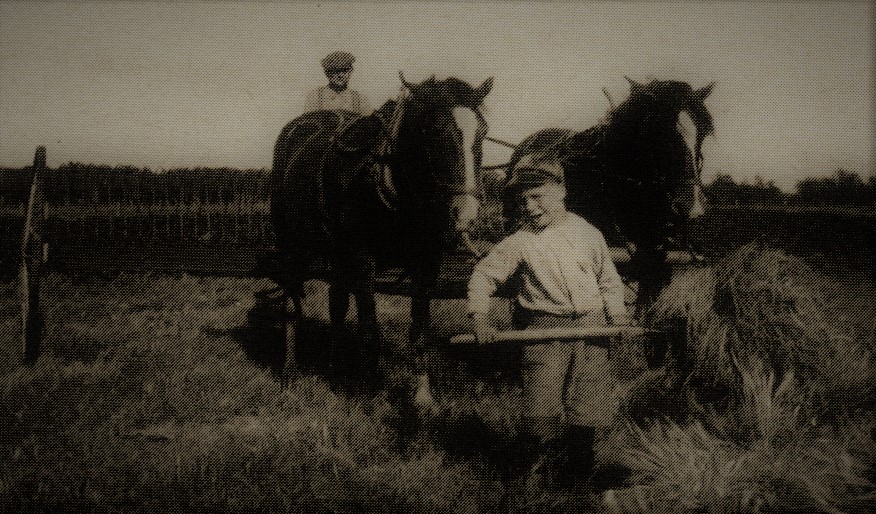Stefán Ólafsson settled in Winnipeg in 1888 and established a home with his wife, Petrína Jónsdóttir, a year later. He got a job at the Leland Hotel in the city peeling potatoes, washing dishes and cleaning. Petrína was hired by wealthy people and soon mastered English in her daily contact with English-speaking children and adults. Stefán was interested in farming and bought a few dairy cows that he could have in the pasture not far from where he lived on Toronto Street. He ran a very small dairy shop in his home until he chose the countryside and in 1901 decided to take land in the Lundar Settlement. He called his land Lundur. He had his friend Gísli Grímsson, who worked with him on the farm, as a source of trust and support. The cows were milked, and the milk was transported to a milking parlor in Lundar. He bought a few sheep then used the meat, wool and skins, some for the family but others were sold.
Gísli went fishing in the autumn in Lake Manitoba, where so-called white fish were caught in nets. The catch was hauled on a special cart to a house where some were salted while others were smoked. During the winter, he fished through the ice, which was quite a risk because the ice turned out to be thin in parts and therefore dangerous. At first the catch was placed on a sledge and Gísli dragged it from home to town, but later he used dogs. They had to be housed in special lodges and cages all summer, each team individually. Technology advanced and both fishing and transporting them became easier. Stefán’s sons were quite young, 13-14 years old, when they went fishing with Gísli, and Árni, the youngest, would have been fishing like this all his life. Stefán’s sons finished their schooling and chose to farm with their father and Gísli. More land was bought, cleared, and plowed and now arable farming was added. Mixed farming on the plains was less risky than just farming, cattle breeding or running a dairy farm. The land could sometimes not be plowed due to wetness, the price of cattle could fluctuate, but if people had such risks, how did they survive? (Wagons to Wings)

Gísli Grímsson and Stefán’s grandson, Óskar Árnason, during haymaking in the Lundar Settlement. Photo: WtW
